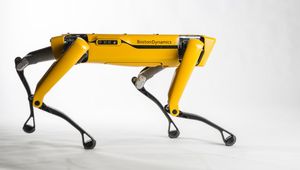Electrostatic Dissipative Plastics
ESD plastics to reduce electric charge build-up, preventing material damage and accidents.
Technical Specifications
| Product Type | Electrostatic Dissipative Plastics |
| Surface Resistance | 10^4 to 10^8 Ohms |
| Compliance | EU 10/2011 |
| Applications | Food processing, Electronics, Semiconductor, Automotive, Pharmaceutical Industry |
Overview
Electrostatic Dissipative (ESD) plastics from Mitsubishi Chemical Group are specialized plastics that prevent materials from accumulating and discharging static electricity. The materials impede charge build-up, which protects sensitive electronic devices and sensors in industrial setups. These plastics are suitable alternatives as their lower surface resistance helps dissipate charge through the entire volume of the material. ESD plastics have applications in high-end engineering equipment thanks to their mechanical properties, temperature and wear resistance.
Multi-Faceted ESD Material Portfolio to Address Industry-Specific Needs
Electrostatic dissipative plastics are suitable alternatives for anti-static plastics primarily because of their lower surface resistance. The material can dissipate charge throughout the entire volume. There is a wide range of ESD plastics, based on their thermal and electrical performance, strength and stiffness.
Here is a breakdown of the available ESD plastics:
Semitron® ESD 520 HR PAI - It can withstand dielectric voltages to ensure high mechanical strength and heat resistance. It can handle between 100 to 1000 Volts.
Semitron® ESD 410C PEI - Provides high dimensional stability and thermal resistance for up to 210 degrees Celsius.
Semitron® ESD 420 PEI - It features high strength and stiffness. It’s best suited for tight-tolerance machining and applications involving high thermal resistance.
Semitron® ESD 420V PEI - Best for moisture-handling and provides better dimensional stability.
Semitron® ESD 300 PET-P - Provides exceptional thermal resistance and features abrasion resistance.
Semitron® ESD HPV PEEK - Poly-ether-ether-ketone that provides dimensional stability
Semitron® ESD 225 POM - Copolymer Polyoxymethylene for quick dissipation and high wear resistance.
Semitron® ESD 500HR PTFE - Provides thermal insulation and offers high chemical resistance and a low coefficient of friction.
Wide-Ranging Applications in the Industrial Sector
Since ESD plastics can minimize potential risks attached to electrostatic discharge, they have a wide range of use cases in the industrial sector. They are best suited for industrial setups featuring sensitive electronic components or explosive materials.
The applications include semiconductor and electronics manufacturing processes like back-end testing, burn-in, and the production of test sockets, electronic fixturing, printed circuit boards, housing, covers, handling trays, connectors, and cable assemblies.
ESD plastics are suitable for ensuring the stability of test sockets. The sockets tend to wear out under different conditions. Hence, ESD plastics ensure dimensional stability across various temperatures.
Additionally, these ESD plastics are used in material handling and storage applications, serving as wear surfaces, linings for storage and transport containers, conveyors, hoppers, chutes, tubes, silos, and bunkers.
Also, ESD plastics are useful in food and pharmaceutical industries, being employed for linings, scrapers, conveyor belts, switches, connectors, housings, and cleanroom equipment and components.
In the automotive sector, ESD plastics can be used with electronic components, sensors, switches, and control modules, ensuring the prevention of electrostatic discharge-related risks in these diverse and critical industrial scenarios.
References
Recommended Specs
Continue Reading
Submerged arc welding is a standard industrial process wherein an arc is formed between a workpiece and an electrode. It was invented in 1935 by the E. O. Paton Electric Welding Institute in Kyiv, Ukraine as a driving force behind the Second World War. One of the most notable applications of this invention is the T34 military tank.










